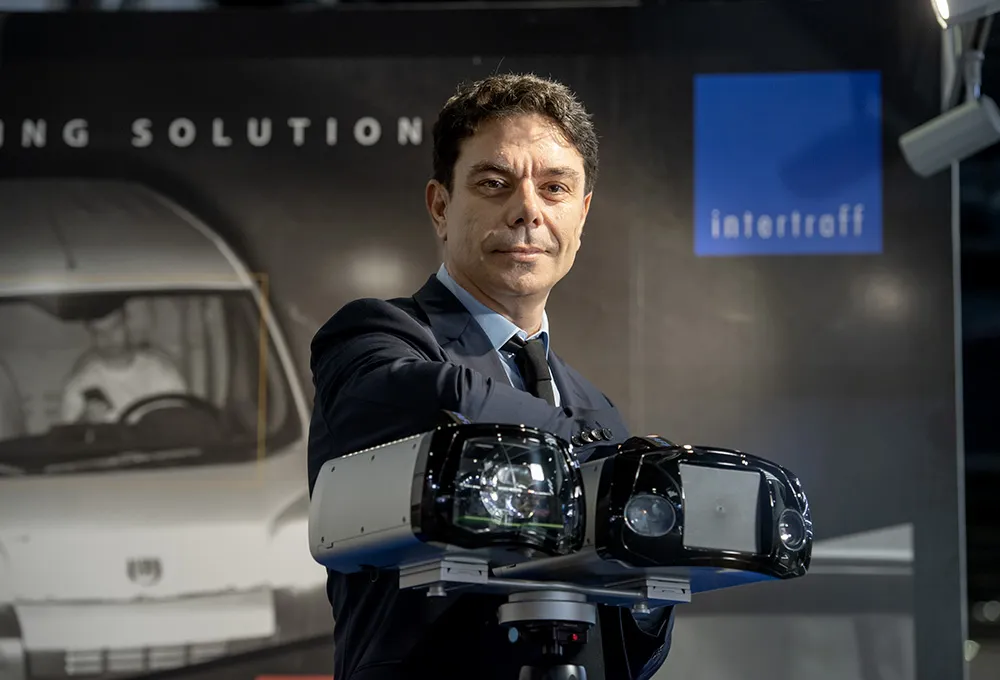
When a company launches a product it never quite knows how that product will be used and what else it may be required to do. Lufft’s mobile weather sensor MARWIS is a prime example.
Last winter
What was known was the sensor’s fast reaction rate (up to 100 Hertz), combined with its wide range of measurement information, and would provide users with a gapless overview of the road status.
TÜV SÜD had approved MARWIS to IP68 (dustproof and water resistant to 1m) and it achieved good results in the vibration and electromagnetic compatibility tests (excluding electromagnetic interference).
Some of the first applications of MARWIS were on Canadian motorways and Italian airports and earlier this year the sensors were mounted on school buses in Winston-Salem, North Carolina, USA - all applications that could be predicted.
However, other potential users asked about MARWIS’ suitability as a stationary road weather monitor, for checking satellite dishes and to determine if airplane wings need to be de-iced before take-off. Lufft easily catered for the first request by creating a suitable mast which was shorter than the traditional stationary opto-electronic road sensors like the Lufft NIRS31-UMB because MARWIS has a shorter measuring distance.
For the second request, Lufft’s developers tested the sensor on the material used for satellite dishes and showed that the detected values were reliable; proving both the suitability for use on satellite dishes and the new sensor’s flexibility.
Currently aircraft wings are preventively de-iced if there is a possibility of icing (as determined by the air temperature) rather than by measuring the actual wing surface. “The difference in temperature between the air and the wing surface can vary with readings from users showing differences of up to 6°, whereof the wings tend to be cooler,” says Lufft CEO Klaus Hirzel.
An actual wing surface temperature check is a more accurate method of determining the conditions and the likelihood of ice formation. While the solution is not yet finished, the company believes it is quite likely to succeed.
Some improvements have been made including enhancements to the friction measurement algorithm which also improved the accuracy of the snow and ice values. A pyrometer calibration and adjustment facility has been added, allowing users to manually adjust the temperature measurement using a reference meter, and a built-in LED system now shows the device status as red (a fault has occurred), yellow (warming up) or green (ready).
A road condition model was introduced allowing users to select the output shown as either the minimum, maximum or average detected value of the up to 100 readings taken in the second between display updates. The water film threshold was reduced to 10µm (from 30µm) to provide a ‘damp’ when 10 µm or more water is on the surface.
Two firmware updates were made in the first months and the output is now available in German, English and Russian.
Currently being finalised is the HTML/Javascript-based ViewMondo monitoring software - programmed and provided by IT partner Informatik-Werkstatt that will display MARWIS results on tablets or smartphones without requiring plug-ins and will allow authorities to assign different user interfaces to different stations so each user can only view their own station(s).
The data center operators using ViewMondo can see all their assigned stations (both fixed and mobile) on an overview map with different colors indicating the road status, such as ‘everything ok’, ‘warning’ or ‘alert’. An automated de-icing recommendation is also provided by the new, associated software.
ViewMondo’s plausibility check function detects erroneous values - either permanently constant or with big changes between successive measurements. It also cross-checks data such as temperature and precipitation type (a cold environment must cause snow, not rain) or road condition and water film height (a wet road must have a water layer). Quality check rules can also be adapted to give information about the sensor’s functionality with any deviation logged, and any failure can generate an automatic email alert.
Lufft, like others, cannot foresee all the applications and requirements users may have once a product is released. But as Hirzel says: “A potential user should always ask the supplier ‘will it do this job’? They will either know or find out the answer because for suppliers like us, more applications and more functions mean more business.”








